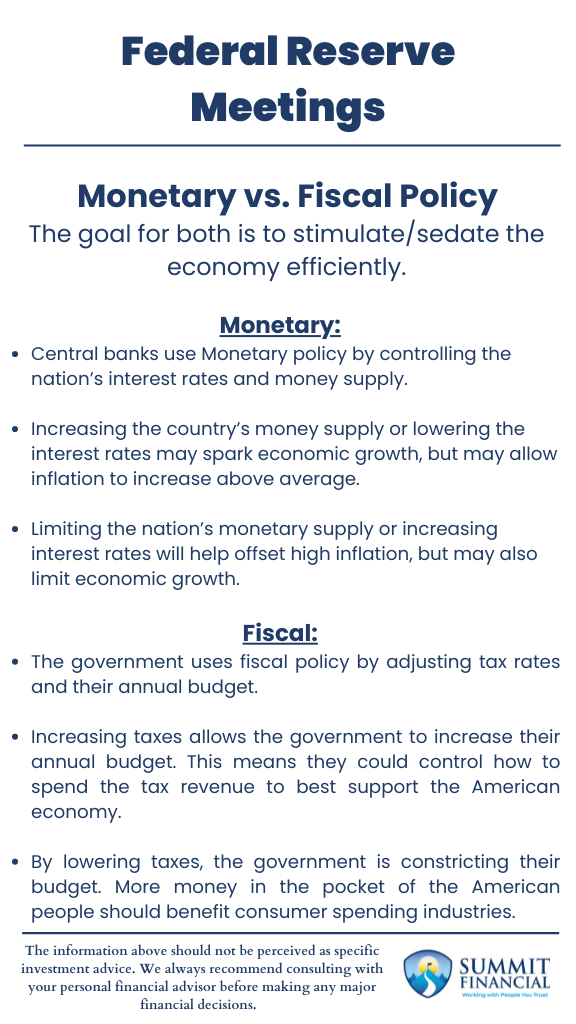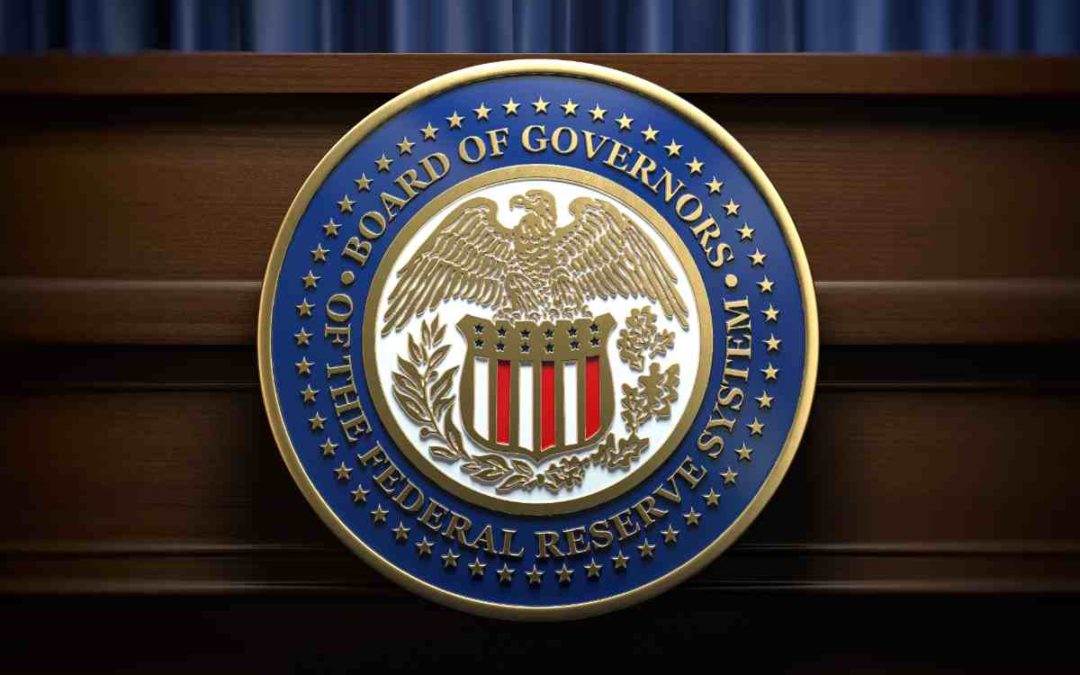One of the hottest financial topics lately has been the Federal Reserve and their upcoming tightening policy schedule. In order to really understand the impact of interest rate hikes, it is important to review the basis of fiscal and monetary policy. Both types of policy are used as an effort to control the economy via providing stimulation or sedation at appropriate points in time.
What Is Monetary Policy?
Monetary policy is implemented by the FED, and it includes the control of interest rates and the nation’s money supply.
Monetary policy is implemented by the FED and it includes the control of interest rates and the nation’s money supply. The FED will decrease interest rates in order to stimulate an economy since corporations and individuals can receive loans at a lower rate. This makes debt more attractive, which should provide funds for various expenditures or investments. Raising interest rates will slowdown the economy since leverage becomes more expensive. This impact is a primary driver as to why many families will not acquire a new mortgage during periods of rising interest rates.
The FED also has the ability to control the money supply. Printing more money allows the government to provide more funds to banks and also allows them to purchase investment securities if needed, like they did during the COVID-19 pandemic. However, printing more money tends to lead to a rise in inflation, which the FED is now tasked with combatting
As a result, the Federal Reserve is looking to unwind these purchases and also raise interest rates in an attempt to limit the impact of inflation.
What Is Fiscal Policy?
Fiscal policy is used by the federal government by altering tax rates or their annual budgets. Higher taxes will result in a higher revenue stream for the government, which means they could expand their budget spending. The government is able to use these funds to support government programs or increase investment in specific industries.
Lower taxes will result in less revenue, so this will cause a tighter budget. This often results in more money in the pocket of the American people, and this should benefit the consumer spending industries.
During COVID-19, the government allocated a good chunk of their budget to providing stimulus to the economy, including direct payments to individuals. The government has not raised taxes though, which means other areas of the budget had to be decreased in order to provide this allocation to fiscal stimulus.

Impact of Tightening Monetary Policy
Now that we have discussed the differences between monetary and fiscal policy, we can now detail the impact of tightening policy. The FED has acknowledged the high level of inflation hitting the United States, but they are also aware we are coming off of a period of high growth.
The primary goal of raising interest rates is to limit the impact of inflation. Raising interest rates increases the market’s risk-free rate of return, which causes treasuries to become more attractive compared to other investments.
This should cause investors and corporations to consider delaying the purchase of items hit heavily by inflation, including riskier asset classes and costly capital expenditures.
Balancing Inflation and Economic Growth
One of the biggest concerns of inflation is the devaluing of the American dollar, but if that dollar can be invested risk-free for a higher rate of return, the devaluation will be lessened by the degree the interest payment is risen.
Unfortunately, monetary policy is limited in ways to offset inflation, except for lowering tax rates. We do not believe this is a viable option since the government is already severely in debt and do believe we will potentially see an increase in tax rates for the longer-term. Our main concern is that the Federal Reserve tightens policy too far and then we begin to see a negative impact on the economy.
Some of our research is already expecting a growth slowdown compared to the 2021 data, since last year saw the major benefit of reopening post-COVID-19. Rightening policy may constrict future growth, which could be a negative if growth is already expected to slowdown. So the important question for the FED is this:
Should we try to offset the high inflation, or do we focus on keeping a healthy level of growth in the economy? The FED likely cannot achieve both through their policy actions.
Monetary Policy vs. Fiscal Policy– Key Takeaways
- Central banks use Monetary policy by controlling the nation’s interest rates and money supply.
- The government uses fiscal policy by adjusting tax rates and their annual budget.
- The goal for both is to stimulate/sedate the economy efficiently.
Speak With a Trusted Advisor
If you have any questions about your investment portfolio, retirement planning, tax strategies, our 401(k) recommendation service, or other general questions, please give our office a call at (586) 226-2100. Please feel free to forward this commentary to a friend, family member, or co-worker. If you have had any changes to your income, job, family, health insurance, risk tolerance, or your overall financial situation, please give us a call so we can discuss it.
We hope you learned something today. If you have any feedback or suggestions, we would love to hear them.
Sincerely,
Zachary A. Bachner, CFP®
with contributions from Robert Wink, Kenneth Wink, James Wink
Sources:
- https://www.investopedia.com/ask/answers/100314/whats-difference-between-monetary-policy-and-fiscal-policy.asp
- https://www.cfainstitute.org/en/membership/professional-development/refresher-readings/monetary-fiscalpolicy#:~:text=Monetary%20policy%20refers%20to%20central,regulate%20economic%20activity%20over%20time
- https://www.businessinsider.com/personal-finance/monetary-policy-vs-fiscal-policy
- https://www.investopedia.com/ask/answers/12/inflation-interest-rate-relationship.asp


